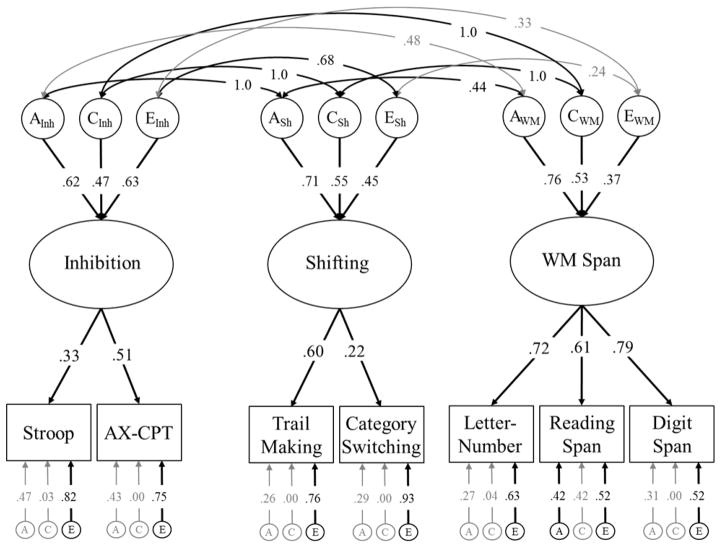Figure B1.
Three factor model of EF with correlated genetic and environmental influences on Inhibition (AInh, CInh, EInh), Shifting (ASh, CSh, ESh), and WM Span (AWM, CWM, EWM). This model also fit the data well, and corresponds closely to the correlated factors model presented by Miyake et al. (2000). However, we favored the unity and diversity model presented in Figure 2 because it had the most parsimonious fit (see Table 2) and highlights Common EF vs. EF-specific variance components. Significant factor loadings and correlations are displayed with black text and black lines (p < .05).

